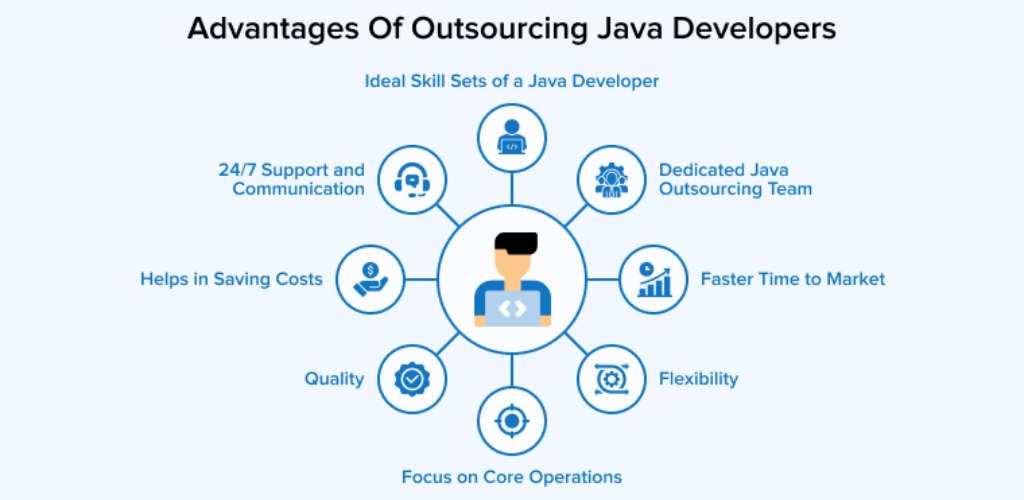An Introduction to Kotlin: The Modern Programming Language for the JVM
Kotlin, a statically typed programming language, has rapidly gained traction in the software development world since its official release by JetBrains in 2016. Designed to interoperate fully with Java, Kotlin has emerged as a popular choice for developers as well as mobile app development companies seeking a modern, expressive, and versatile language. This article delves into Kotlin’s features, insights, its benefits, and why it’s becoming a preferred choice for many developers.
Insights and Statistics on Kotlin
Since its official release by JetBrains in 2016, Kotlin has seen a rapid rise in popularity, supported by both its robust features and the backing of major tech companies like Google. Here are some key insights and statistics that highlight Kotlin’s growth and adoption:

Adoption and Popularity
1. Google’s Endorsement:
In 2017, Google announced official support for Kotlin as a first-class language for Android development. This endorsement significantly boosted Kotlin’s adoption among Android developers. By 2019, Kotlin was declared the preferred language for Android app development by Google.
2. Developer Surveys:
According to JetBrains’ “State of Developer Ecosystem” report in 2020, Kotlin was among the top 5 most popular languages, with a significant percentage of developers using it regularly. In the 2021 Stack Overflow Developer Survey, Kotlin ranked as the 14th most popular programming language, with 8.32% of respondents using it.
3. GitHub Usage:
GitHub’s annual Octoverse report has consistently highlighted Kotlin as one of the fastest-growing languages in terms of repositories and contributions. In the 2020 report, Kotlin was the 10th most popular language on the platform.
4. Market Demand:
A survey by HackerRank in 2020 indicated that Kotlin was the second most loved language by employers looking to hire, just after Go, reflecting the growing demand for Kotlin expertise in the job market.
Community and Ecosystem
1. Active Community:
Kotlin has a vibrant and active community that connects through numerous conferences, meetups, and online forums. KotlinConf, an annual conference organized by JetBrains, attracts thousands of developers worldwide.
2. Library and Framework Support:
Kotlin is backed with a stack of myriad libraries and frameworks. Popular Java frameworks like Spring and Vert.x have added extensive Kotlin support, while Kotlin-specific frameworks, such as Ktor for web development are gaining traction.
3. Learning Resources:
The Kotlin community and JetBrains provide extensive learning resources, including comprehensive documentation, online courses, and tutorials. Platforms like Coursera, Udemy, and Pluralsight offer Kotlin courses, reflecting the language’s strong educational support.
Performance and Productivity
1. Developer Productivity:
Surveys and case studies consistently show that developers & software development companies find Kotlin more productive than Java. For instance, a study by Pusher in 2018 found that 67% of Kotlin developers reported increased productivity, mainly due to the language’s concise syntax and improved type safety.
2. Fewer Bugs:
Kotlin’s null safety feature has led to a significant reduction in null pointer exceptions. According to a study by Realm in 2018, Kotlin codebases had 20% fewer crashes related to null pointer exceptions compared to Java codebases.
3. Codebase Size:
Companies that have switched to Kotlin often report a reduction in codebase size. For example, Pinterest reported a 30% reduction in code size after migrating to Kotlin, which simplified maintenance and reduced the potential for bugs.
Industry Adoption
1. Major Companies:
Several high-profile companies have adopted Kotlin for their Android applications. Notable examples include Pinterest, Uber, Trello, Evernote, and Square. These companies often cite improved developer satisfaction and code quality as key reasons for the switch.
2. Enterprise Use:
Kotlin is also gaining traction in enterprise environments beyond Android application development. Companies like Netflix, Amazon, and LinkedIn use Kotlin for backend services, leveraging its modern features and seamless integration with existing Java infrastruct.
3. Open Source Projects:
The Kotlin ecosystem includes innumerable open-source projects that showcase its capabilities. Projects like Ktor (a web framework), and Kotlinx. coroutines (for asynchronous programming), and Anko (for Android development) are widely used and contribute to Kotlin’s growing ecosystem.
Key Features of Kotlin and Java
Here’s a comparison of key features between Kotlin and Java in a tabular format:
| Feature | Kotlin | Java |
| Null Safety | Built-in null safety to prevent NullPointerException | No built-in null safety, prone to NullPointerException |
| Type Inference | Strong type inference reduces the need for explicit types | Limited type inference, requires explicit type declarations |
| Conciseness | More concise syntax reduces boilerplate code | Verbose syntax often requires more boilerplate code |
| Extension Functions | Allows adding functions to existing classes without modifying them | No support for extension functions |
| Smart Casts | Automatic type casting based on type checks | Requires explicit casting |
| Coroutines | Native support for coroutines for asynchronous programming | Uses threads and external libraries for async tasks |
| Data Classes | Automatically generates boilerplate code for classes with the primary purpose of holding data | No native support requires manual code implementation |
| Default and Named Arguments | Supports default and named arguments in functions | No native support requires method overloading |
| Interoperability | Fully interoperable with Java | Can call Kotlin code with some limitations |
| Immutability | Emphasizes immutability with val and var keywords | Supports immutability but not as enforced |
| Functional Programming | Supports functional programming features like lambdas, higher-order functions, and inline functions | Supports lambdas and functional interfaces (Java 8 and above) |
| Standard Library | Rich standard library with many useful utilities | Comprehensive standard library, but often requires external libraries for additional utilities |
| Scripting | Supports scripting | No native scripting support |
| Tooling | Strong support with IntelliJ IDEA | Strong support with various IDEs like IntelliJ IDEA, Eclipse, and NetBeans |
| Operator Overloading | Supports operator overloading | No support for operator overloading |
| Annotation Processing | Supports annotation processing | Supports annotation processing |
| Compile-time Constants | Supports compile-time constants with const val | Supports compile-time constants with static final |
| Generics | Supports generics with reified type parameters | Supports generics but without reified types |
| Checked Exceptions | No checked exceptions, only unchecked exceptions | Supports both checked and unchecked exceptions |
This table highlights how Kotlin builds on Java’s strengths while introducing several features for improving developer productivity and code safety. While Java remains a robust and widely used language, Kotlin’s modern features and enhancements make it a compelling choice for many developers, particularly those working in Android development companies or seeking a more concise and expressive syntax.

Pros and Cons of Java and Kotlin
Here’s a comparison of the pros and cons of Java and Kotlin in a tabular format:
| Aspect | Java: Pros | Java: Cons | Kotlin: Pros | Kotlin: Cons |
| Maturity | Well-established, with a long history and stability | Can be verbose and boilerplate-heavy | Modern language with concise syntax | Newer, less mature compared to Java |
| Performance | Generally high performance, especially with JVM optimizations | Slower start-up times for JVM applications | Similar performance to Java due to JVM execution | Potential slight performance overhead due to additional features |
| Community | Large, active community with extensive resources | May have outdated or legacy code | A growing community with strong JetBrains and Google support | Smaller community compared to Java |
| Tooling | Excellent tooling support in various IDEs | Some older tools may not support the latest language features | Excellent tooling, especially in IntelliJ IDEA | Tooling outside of IntelliJ IDEA may not be as robust |
| Library Support | Vast ecosystem of libraries and frameworks | Some libraries can be outdated or lack modern features | Full interoperability with Java libraries | Some Kotlin-specific libraries are still maturing |
| Learning Curve | Easier for beginners due to widespread use and resources | Verbose syntax can be a hurdle for beginners | Easier to write and read due to concise syntax | Requires learning new syntax and concepts for Java developers |
| Null Safety | None, prone to NullPointerException (NPE) issues | Requires careful handling of null values | Built-in null safety to prevent NPE | Interoperability with Java can reintroduce null safety issues |
| Syntax | Familiar to many due to the widespread use | Verbose and repetitive | Concise and expressive, reducing boilerplate code | New syntax and features can have a learning curve |
| Concurrency | Strong concurrency support through threads and frameworks like ExecutorService | Manual management can be complex and error-prone | Coroutines provide simpler, more readable async code | Coroutine support is still evolving |
| Functional Programming | Supports functional programming from Java 8 onwards | Limited functional programming features compared to modern languages | Strong functional programming support, including lambdas and higher-order functions | Functional programming style can be unfamiliar to OOP developers |
| Data Handling | Requires manual creation of boilerplate code for data classes | Verbose, requiring getters, setters, equals, hashCode, toString | Data classes simplify and reduce boilerplate | Automatic generation might hide complexity from developers |
| Interoperability | Interoperable with many languages via JVM | Full interoperability only with JVM languages | Fully interoperable with Java | Interoperability can lead to mixed codebases and potential issues |
| Market Demand | High demand for Java developers | Competitive job market | Increasing demand, especially in Android development | The job market smaller than in Java |
| Backward Compatibility | Strong backward compatibility with older versions | This can lead to the accumulation of legacy features and technical debt | Modern language features without legacy constraints | Some features depend on the underlying Java version |
| IDE Support | Excellent support in multiple IDEs (IntelliJ, Eclipse, NetBeans) | Some IDEs may not support newer language features immediately | Excellent support in IntelliJ IDEA | Less support in IDEs other than IntelliJ IDEA |
This table provides a balanced view of the strengths and weaknesses of both Java and Kotlin. Java’s maturity, extensive ecosystem, and strong community support make it a solid choice for many applications. Kotlin, on the other hand, offers modern features, improved syntax, and enhanced productivity. Each language has its unique advantages and trade-offs, and the choice between them will depend on specific project requirements and developer preferences.

Real-World Applications
Kotlin has found its place in various domains, particularly in Android development. Major IT services companies like Google, Pinterest, and Netflix have embraced Kotlin for their Android applications, citing improved code maintainability and developer satisfaction. Additionally, Kotlin is gaining traction in server-side development with frameworks like Ktor and Spring supporting Kotlin, broadening its applicability beyond mobile app development.
Conclusion
Kotlin’s rise in popularity is a testament to its strengths as a modern programming language. With its concise syntax, null safety, Java interoperability, and support for asynchronous programming, Kotlin addresses many pain points faced by Java developers. Java Development Companies are increasingly adopting Kotlin to leverage its benefits alongside their existing Java projects. Whether you’re building mobile applications, server-side systems, or even data science projects, Kotlin offers a powerful and versatile toolset that enhances productivity and code quality. As the language continues to evolve, its role in the software development ecosystem is likely to expand, solidifying Kotlin as a go-to language for modern development needs.
Recommended Articles
- https://www.rankfirms.com/best-healthcare-app-development-ideas-for-entrepreneurs/
- https://www.rankfirms.com/magento-vs-shopify-which-is-best-e-commerce-platform/
- https://www.rankfirms.com/the-android-development-journey/
- https://www.rankfirms.com/benefits-b2b-platform-listings-for-businesses/
- https://www.rankfirms.com/android-vs-ios-vs-hybrid-app-development/






